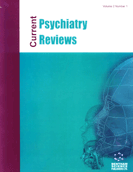Abstract
Tourette syndrome (TS) is defined as a chronic motor and vocal tic disorder. Because dopamine blocking drugs reduce tics it has been suggested that the dopaminergic system is pathophysiologically involved. However, comorbidities such as obsessive-compulsive behavior (OCB), depression, and anxiety are often associated suggesting that imbalances among other neurotransmitter systems may also exist. An increasing body of evidence points to an involvement of the serotonergic system. Serotonin reuptake inhibitors are effective in the treatment of comorbid OCB, depression, and anxiety. Levels of serotonin (5-hydroxytryptamine; 5-HT), the primary metabolite 5-hydroxyindoleacetic acid (5-HIAA), and tryptophan, respectively, have been found to be reduced not only in blood and CSF but also in different brain regions. In addition, neuroimaging studies demonstrated a significant reduction in serotonin transporter binding ratios in TS compared to controls. In addition, alterations in 5-HT2A receptor binding and tryptophan metabolism have been demonstrated. Recent genetic studies suggested a pathogenetic role of polymorphic variation(s) of the novel 5-HT synthesizing enzyme tryptophan hydroxylase 2 (TPH2) in TS. In summary, several findings from clinical, laboratory, neuroimaging and genetic studies strongly support the etiological relevance of the serotonergic system in TS.
Keywords: Tourette syndrome, tics, obsessive-compulsive disorder, serotonin, tryptophan, 5-hydoxyindoleacetic acid
 2
2

